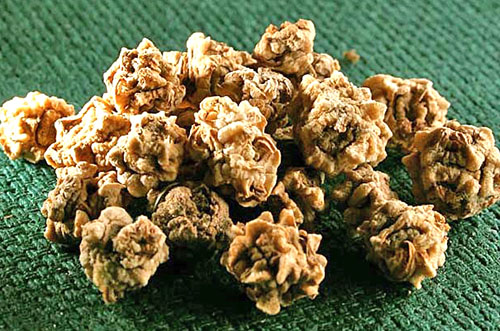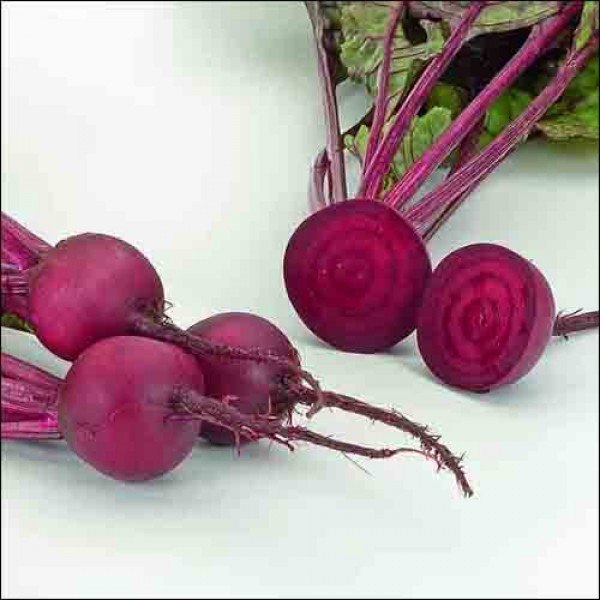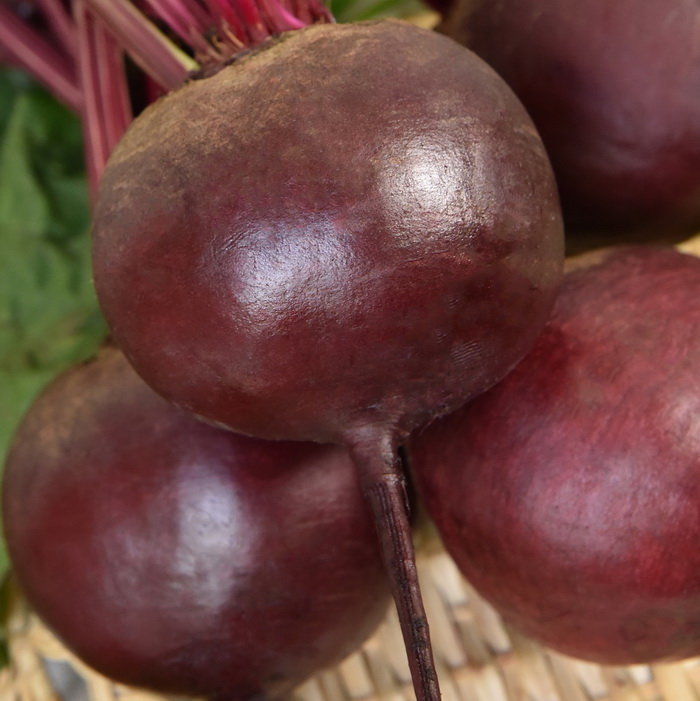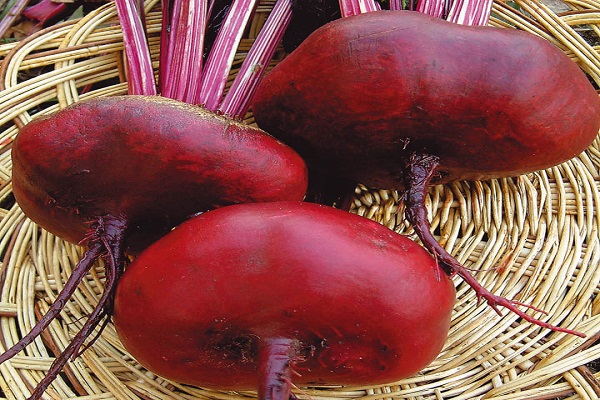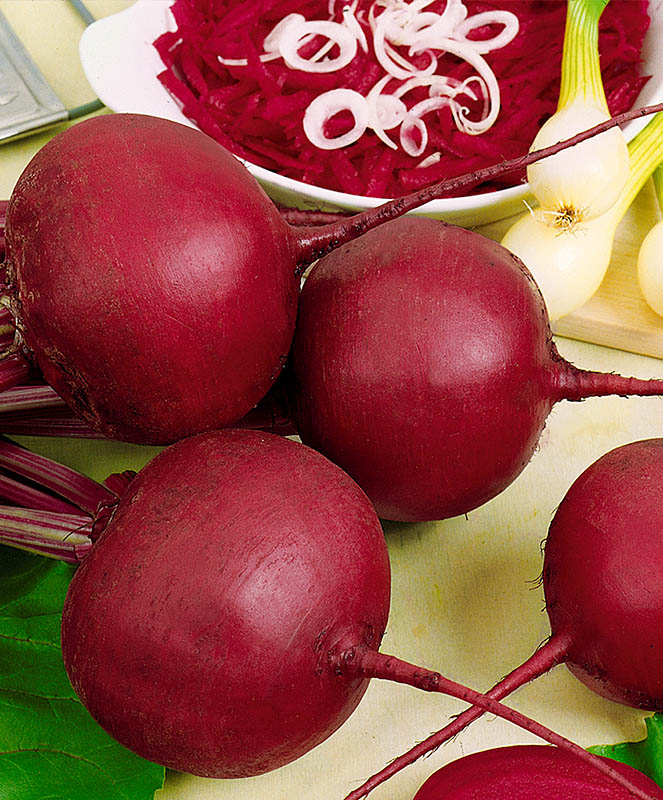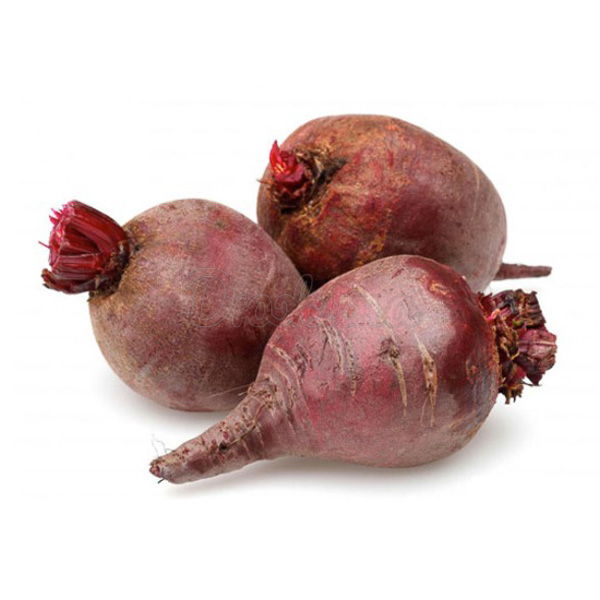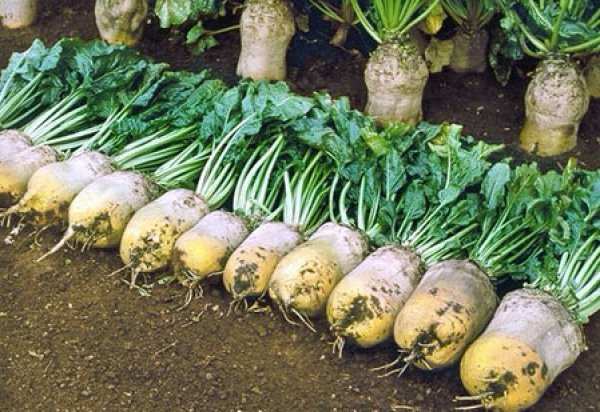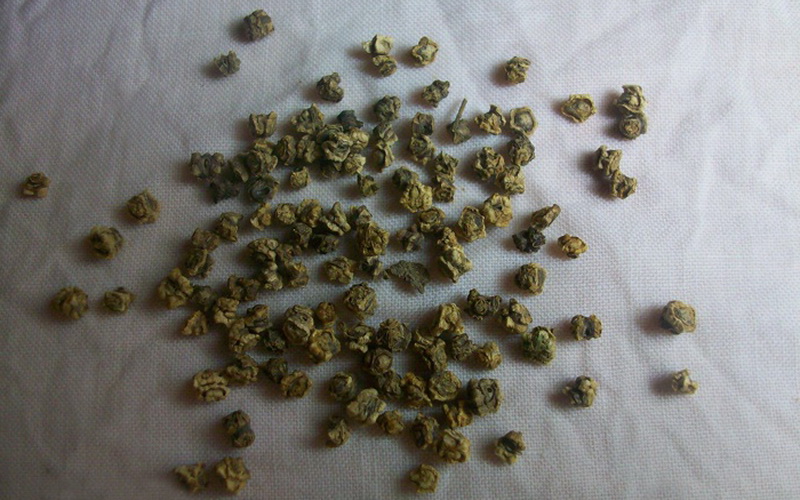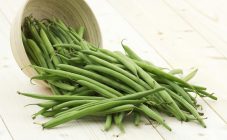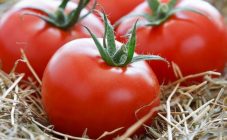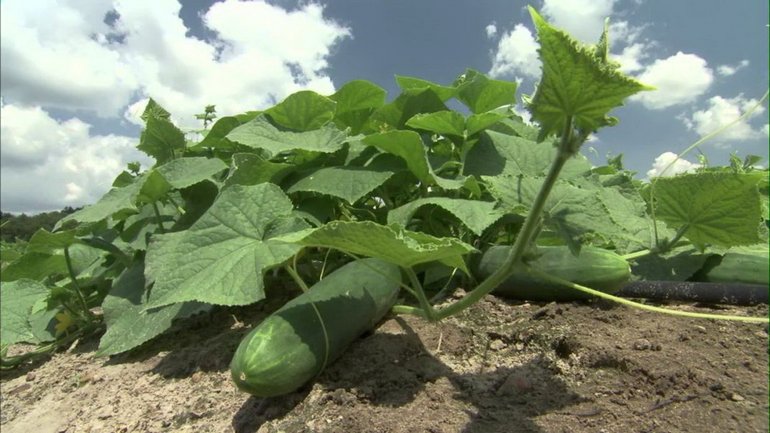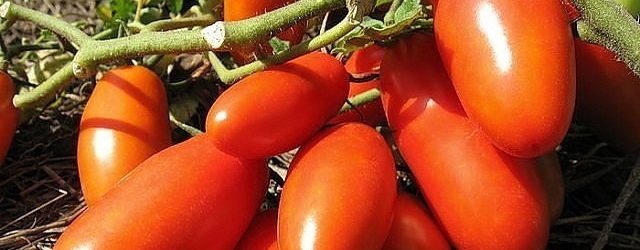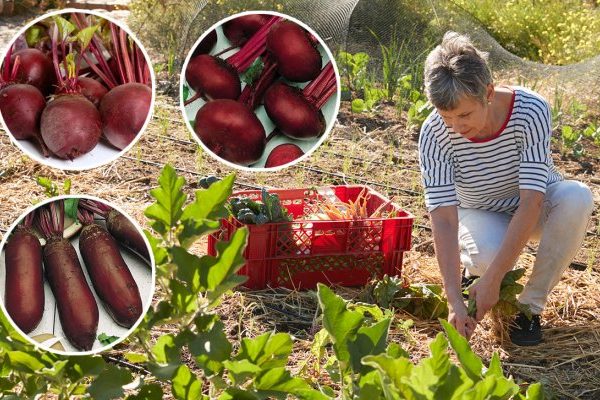Content:
To get a good harvest, properly preparing the soil and organizing proper care is not enough. Particular attention should be paid to the choice of seeds, their ability to give a good and timely germination. The best beet seeds for open field will be upset in this article.
Types of varieties for open ground
The quality of beet seeds directly depends on breeding work. All varieties of vegetables have their own characteristics, which play a role in preparing seeds for planting and further care. At the moment, more than 40 representatives of the varietal variety of beets are known, which are planted in open beds.
From such a wide variety, beet varieties that are especially popular and respected can be distinguished:
- Libero. The root crop, the weight of which does not exceed 230 g, has a rounded shape. The pulp has a maroon color and a pleasant taste. However, this variety is not able to store much sugar. The crop can be harvested in the last days of the first summer month;
- The red ball is improved. Root crops have a regular smooth shape, weighing from 170 to 250 g. The pulp has almost no rings and cooks quickly. The taste of the fruit is juicy and sweet. The red ball is an early ripe variety, the crop can be harvested in the first half of July;
- Cold-resistant 19. Fruits have a flattened shape, medium-sized size and weight 190-240 g. The pulp has a rich red color, moderately sweet taste and excess juice. That is why this variety cannot be stored for a long time; after harvesting, it is advisable to immediately eat the vegetable;
- Bordeaux 237. The variety is easy to care for, but always gives a good harvest. The vegetable has a large fruit size - 500 g. Sugar pulp, rich burgundy color. The variety is considered mid-season, harvesting occurs only in August-September. The vegetable is located for long-term storage in a dry and cool place;
- Buriak. One of the most widespread beet varieties in Russia. The root crop is very large and can weigh up to 1 kg. The vegetable has a high taste and a wide range of applications in food and medicine. Buriak is a fruitful variety; ripe vegetables are harvested 50-60 days after planting;
- Mother Matryoshka. The mid-season beet variety demonstrates high resistance to diseases and pests. The root crop has a cylindrical shape, the weight of one vegetable is 250-300 g. The pulp has a purple tint without whitish veins;
- Lada. This variety of beets is fodder and is grown for use as feed for livestock. The size of the root crop will depend on the general conditions and care, the shape of the Lada is elongated and oval. Harvested at the end of September.
Interesting. It is very important to select beet seeds according to the area in which the beets will grow.
If we talk about the above varieties, then the Improved Red Ball will take root well in the climate of the middle zone, as well as such varieties of vegetables as Detroit, Bohemia and Egyptian flat.
In the suburbs, Lada and Buryak will perfectly take root. These varieties are well adapted to almost all areas of our country. Also in the climate of the Moscow region, varieties such as Mona and Nohovski grow well.
As for Siberia and the Urals, Bordeaux 237 and Matushka Matryosha show themselves worthy in the harsh climate.
Checking seeds for germination
The selection and preparation of seeds for planting is the foundation that every gardener must lay before starting to grow a particular crop. The first step is to check the germination of beet seeds. To do this, you can buy them, or you can use those that have remained from previous years.
It is worth considering! The shelf life of beet seeds is limited. It is recommended to use them in the first 3-4 years after harvest, otherwise they will lose their ability to yield.
Germination can be checked as follows:
- A certain amount of cotton wool or gauze is placed in a dish with a small amount of water so that the surface of the material is not in water;
- A certain number of seeds, for example 50 or 100, are laid out in a row on the surface of the material. It is necessary to ensure that the seeds are located in such a way that they are not in the water, but can absorb moisture;
- After 3-5 days, each seed should sprout;
- After a few more days, the germination of beet seeds can be assessed.
We need to see how many seeds have sprouted well. If more than 50%, then germination is assessed as normal, if more than 75%, this is an excellent result. If the seedlings have advanced, but have not grown, it cannot be said that the seeds will not yield a harvest while in the ground. Infertile seeds are those that have not changed at all.
It is worth considering! The shelf life of fodder beet seeds is slightly less than that of sugar beets - 1-2 years, but throughout this period the seeds retain their sowing properties.
Preparing seeds for planting
Training seeds of the best varieties of red beet to planting occurs in several stages:
- Disinfection is necessary to protect the root crop from various diseases and fungi. For this, the seeds are soaked in a solution of potassium permanganate for 2-2.5 hours. A fungicide solution is also suitable;
- To seminal the material germinated better, and the development of beet root crops was not disturbed, the seeds can be soaked in special solutions:
- 10 g of baking soda / 1 liter of water;
- 5 g of boric acid and 5 g of nitroammophos fertilizer / 1 liter of water;
- 25 g wood ash / 1 liter of water.
In this case, the water temperature should be at least 30 C.
In any solution, the seeds should lie for 2 hours, after which they must be rinsed with running water first with hot and then cold water. Such a measure will harden the seed in case of temperature extremes.
Soil preparation
The first thing to observe when preparing the soil for planting beets is the rules of crop rotation. Potatoes or melons are considered good precursors for red vegetables.
Beets prefer loose soil - heavy clay soil does not allow oxygen to pass through well, which can lead to early damage to the root crop.
The area for beets must be carefully dug up. The ridges should be 30 cm apart and look like yards.
After preparing the soil, mineral or organic fertilizers are placed in the future ridges.
Landing
Planting beets is best done in mid to late April. But for shoots to appear quickly, it is important to take into account the soil temperature.
To grow beet seeds, the soil must be warmed up to at least 7 C.
However, experienced gardeners use the method of covering the soil with polyethylene immediately after all the snow has melted. Thus, the soil can be brought to the required state in a few days and not have to wait for it to warm up on its own.
Beet seeds are located in a ridge at a distance of 6-7 cm from each other and 3-4 cm in depth. After planting, the soil is mulched with peat or humus. The first shoots can be seen in 2-3 weeks.
There is another way to plant beets on a belt. Ready-made tape can be purchased at the store, or you can make it yourself. For this, a roll of toilet paper is taken, drops of starch paste are placed on its expanded surface at a distance of 15-17 cm from each other.Beet seeds are placed in the drops, and when it comes to planting, a roll of toilet paper with the seeds is simply unwound and sprinkled with earth. This method can save the gardener's time and effort.
Planting beets can be carried out not only with seeds, but also with the help of seedlings. However, this method is less popular due to the laboriousness of the planting process.
Which of the planting methods to choose, the gardener must decide on his own based on his experience and capabilities.
Care and harvest
As soon as the first shoots appear, they must be carefully monitored. The most important thing is to carefully ensure that after watering, a hard crust does not form on the surface of the soil. It is necessary to immediately loosen the soil so that the root crop does not suffocate.
When loosening the soil, it is also recommended to eliminate weeds, which can clog the space for the development of the root crop. Mulching the soil will help reduce weeds while saturating the soil with nutrients.
Beet harvesting should be carried out in accordance with the maturity of a particular variety, after which the best and most whole vegetables are selected and stored in a dry and cool place.
